If you're going on a trip with your trailer, you might want to know the best weight distribution hitch to use—a bar or a chain? You’ve come to the right place, for we have researched this question, and we have the answer for you.
Weight distribution systems use steel spring bars to distribute weight. Chains are part of the system to pull the weight distribution bars up.
Let’s talk more about weight distribution systems that you can use on your vehicle in the succeeding sections. Learn more about how distribution hitches work in the sections below.
Read on!
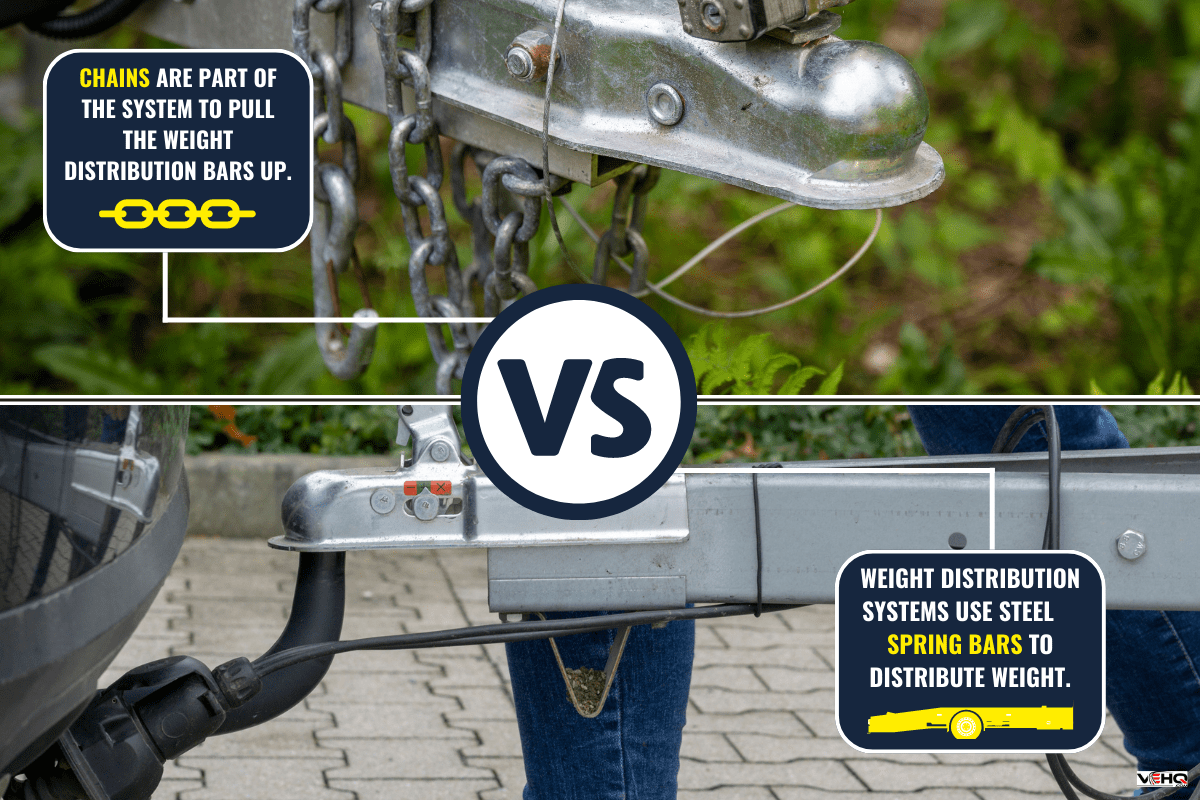
How does a weight distribution system work?
When you connect a heavy trailer to the hitch of your truck without a weight distribution system, the weight of the trailer will push down on the hitch. This weight will then push on the rear axle, causing it to become lower than the front axle. In worse cases, the weight can become great enough that the rear wheels will start to serve as the center of a lever or the fulcrum.
In a lever, the downward force on one side of the fulcrum creates an upward movement on the opposite side of the fulcrum.
Thus, with enough weight, the front of your truck will start to rise. This is very dangerous.
Once the front axle rises from the ground, the tires start to lose traction. The loss of traction will make it difficult to steer the truck because the steering is dependent on the front tires and their traction with the road.
Moreover, the loss of traction will make the braking system less effective. If only the rear tires maintain traction with the road, then only the rear tires will be effective in stopping the truck. With the increased load that the truck is carrying, a drop in the brakes' effectiveness is an accident waiting to happen.
This is why you should use a weight distribution system.
The Levers At Work In A Weight Distribution System
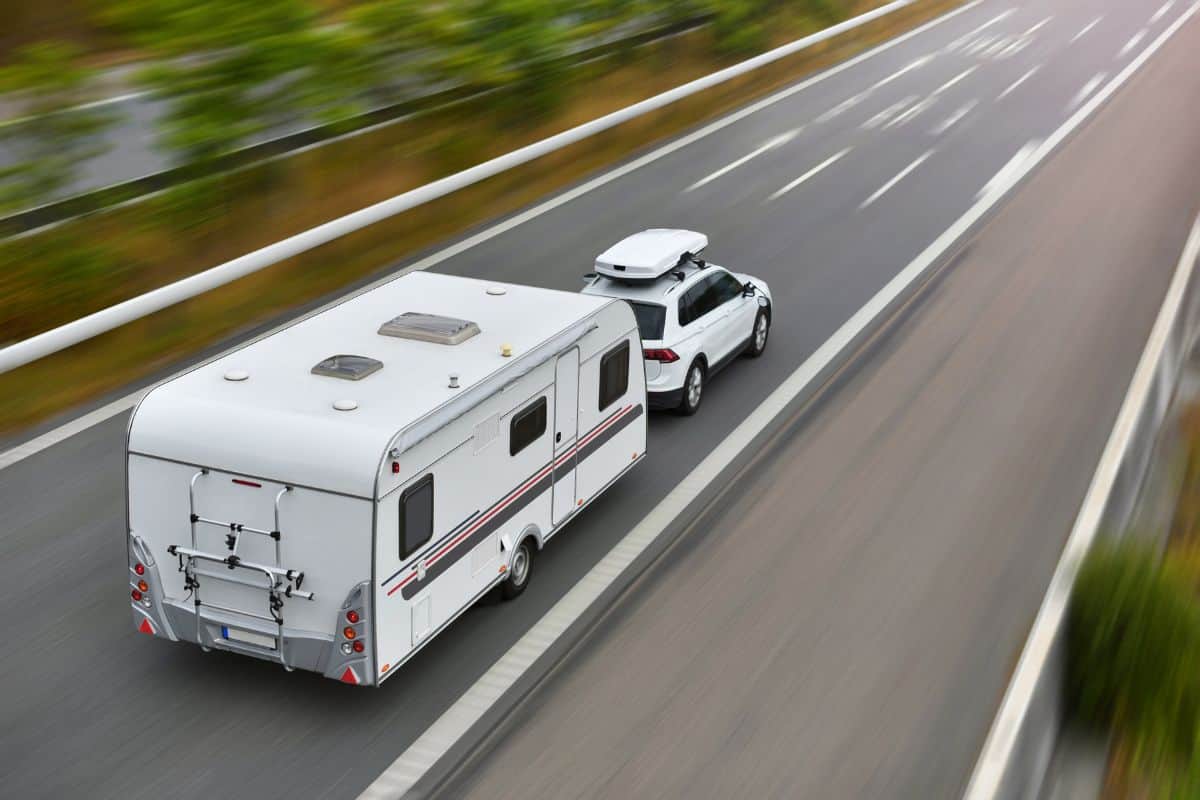
A weight distribution system creates an upward force at the hitch.
Without a weight distribution system, you have a first-class lever. This type of lever has the fulcrum in the middle—which is the rear axle. The downward force on one side of the fulcrum—which is the weight from the trailer—creates an upward force on the other side of the fulcrum—the front axle.
A weight distribution system adds two first-class levers at the bottom of the hitch couplers.
These are the spring bars that you connect to their own mount close to the ball mount. The other end of the spring bar is connected to hook-up brackets, making it easier to connect them to the trailer. This connection is often made with a chain to make it simpler to adjust the distance between the spring bar and the trailer.
The vertical distance between the spring bar and the trailer changes with the spring bar’s angle to the ground. Ideally, the spring bar should have a positive angle with the ground.
When the weight of the trailer starts to push the hitch downward, the vertical distance between the trailer and the spring bar will start to increase. However, with the chain holding that distance to a constant, the downward push of the trailer’s weight creates a downward force on the spring bar.
Thus, since the chains keep the vertical distance constant, this creates an upward force at the opposite side of the second lever. This upward force raises the rear axle which maintains the front axle’s level with the ground.
Additionally, since there is an upward force at the hitch that raises the rear axle of the truck, this upward force effectively transfers some of the weight to the trailer’s axle. The upward force at the rear axle of the truck also pushes the front of the trailer upward, which creates a downward force on the axle of the trailer.
The two levers are connected to each other to distribute the weight of the trailer to the axle of the trailer to alleviate the weight from the rear axle of the truck.
The effect is that the truck and the trailer remain horizontally level with the ground. This improves the handling of the trailer. Since all the wheels are evenly touching the ground, the braking is also more effective.
Chains As Spring Bars
Chains will not work as spring bars.
The purpose of the spring bar is to serve as the beam in the lever. The beam in a lever should be rigid and strong enough to transfer the downward force from one end of the fulcrum to the other end.
Imagine having a pair of scissors with blades made of paper or cardboard. You’d be able to move it like a regular pair of scissors, but you wouldn’t be able to make it do any work—or cut anything. The paper or cardboard is not rigid enough to transfer the force from your fingers to the opposite end of the fulcrum to cut anything.
The same principle applies to the spring bars. Thus, spring bars should be rigid enough and strong enough to handle the force coming from the weight of the trailer. If the spring bars are not rigid enough, they will only bend from the downward force of the trailer’s weight instead of transferring it as an upward force on the hitch.
When to use a weight-distribution hitch?
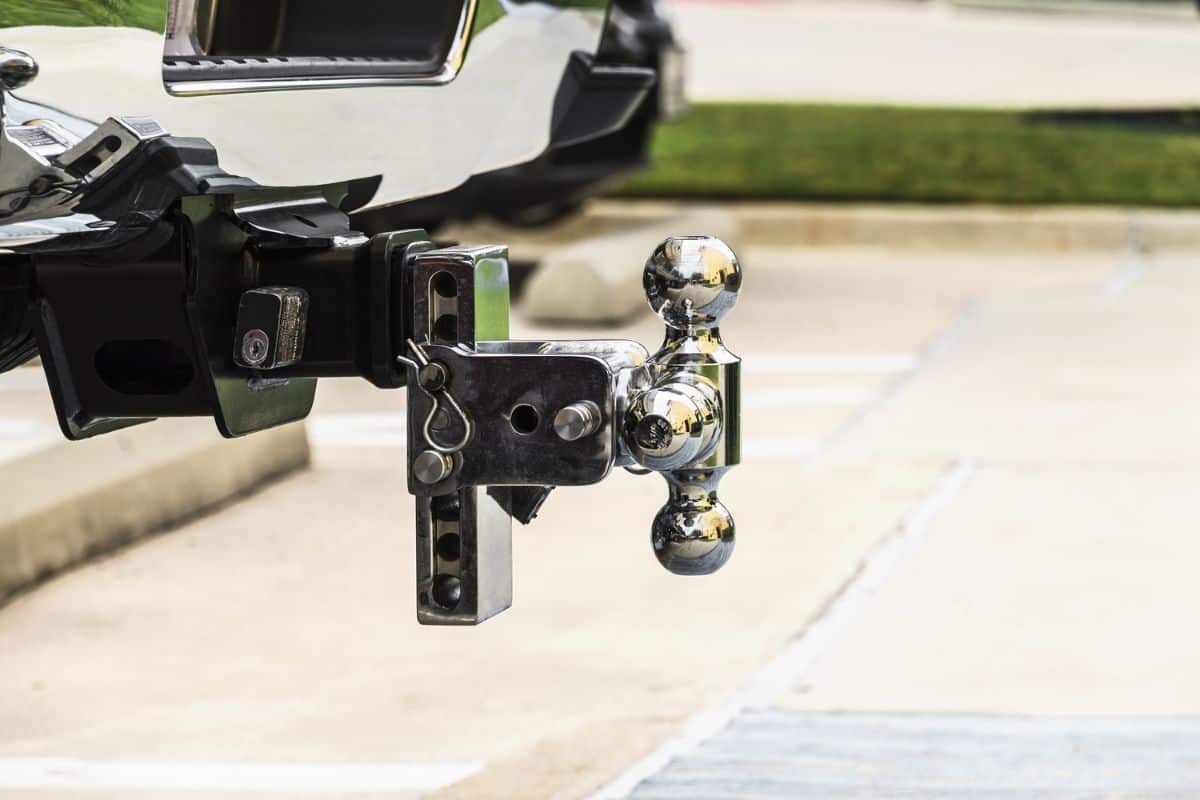
The rule of thumb is that you should use a weight-distribution hitch when the weight of the trailer exceeds the weight of the towing vehicle by 50% of the towing vehicle’s weight.
Thus, if the towing vehicle has a weight of 3,000 pounds, you do not need a weight distribution system if the trailer and its cargo are only 2,800 pounds. However, if you’re hauling a total of 3,001 pounds or more, then you’d need a weight distribution hitch.
Alternatively, check the owner’s manual of your vehicle. Some manufacturers have specific weight recommendations for when to use a weight-distribution hitch on their vehicles. These recommendations are often lower than the 50% rule of thumb.
Rear Sagging
Use a level to check your truck. If there is a large drop in the height of the rear wheels, that means you need to use a weight distribution hitch.
Headlights Are High
If the drop in the height of the rear axles is great enough, the front of your vehicle will start to rise. One symptom of this is that the headlights will no longer light the road but will point upwards.
If this is the case on your vehicle, you need to use a weight distribution hitch.
How to set up a weight distribution hitch?
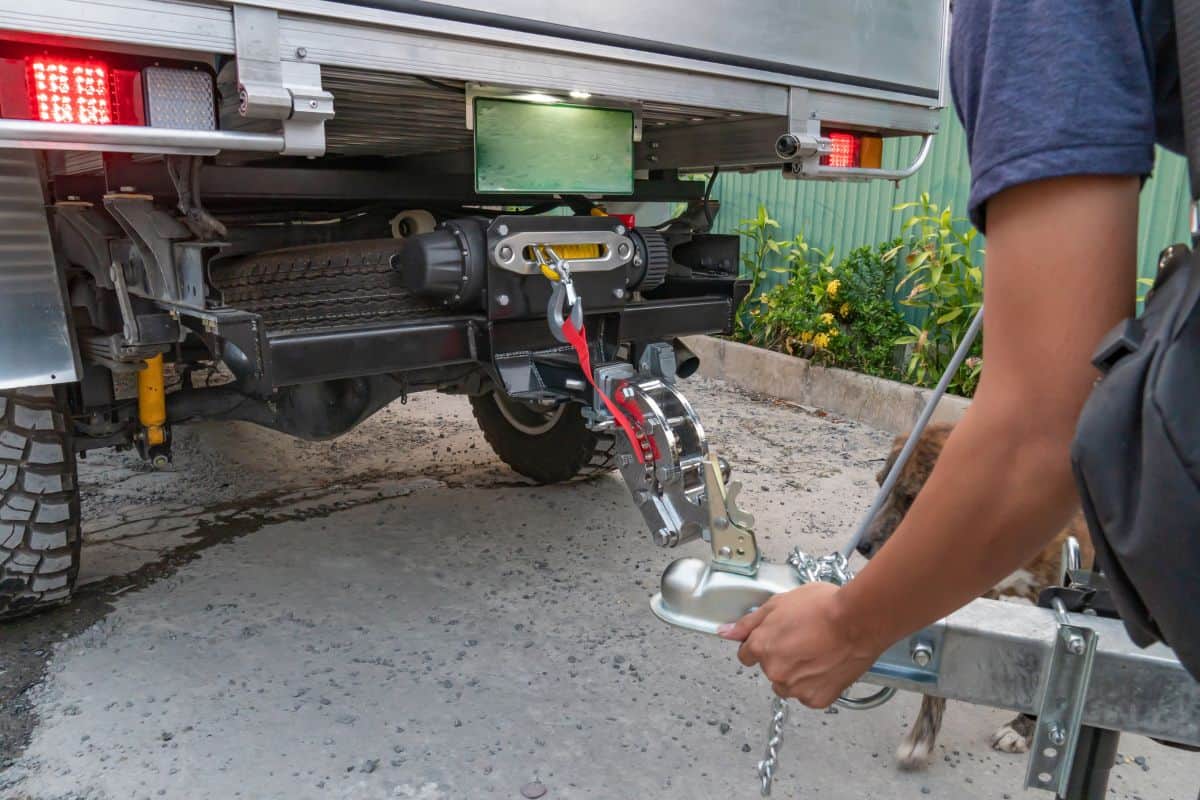
Here are the simple steps to install your weight distribution hitch. After you go through these instructions, check your owner’s manual for special instructions for your specific model that are not included in the steps below.
Preparing Your Trailer
- Park your vehicle on a level surface. It should be in line with your trailer.
- Engage the parking brake while you prepare the trailer.
- Park the trailer on level ground.
- Place a block of wood under the tongue jack to prevent damaging the bottom of the tongue jack and the surface of the road.
- Place a level on the trailer’s tongue.
- Raise the tongue jack until the trailer is level.
- Measure the height of the tongue with a retractable measuring tape.
Qooltek multipurpose laser level is available on Amazon through this link.
Komelon measuring tape is available on amazon through this link.
Preparing Your Vehicle
- Measure the height of the trailer’s coupler from the ground while it is level.
- Install the appropriate draw bar into your truck’s receiver. Adjust the position of the draw bar to be 2 to 3 inches higher than the coupler’s height.
- Install the head assembly into the draw bar.
- Insert the bolts to lock the draw bar in place.
- Insert washers, then tighten the nuts to secure the bolts.
-
- Ideally, the tow ball should be an eighth of an inch higher than the trailer’s coupler for every 100 pounds of tongue weight.
- Tug at the head assembly to make sure that it is secure.
Installing Spring Bars
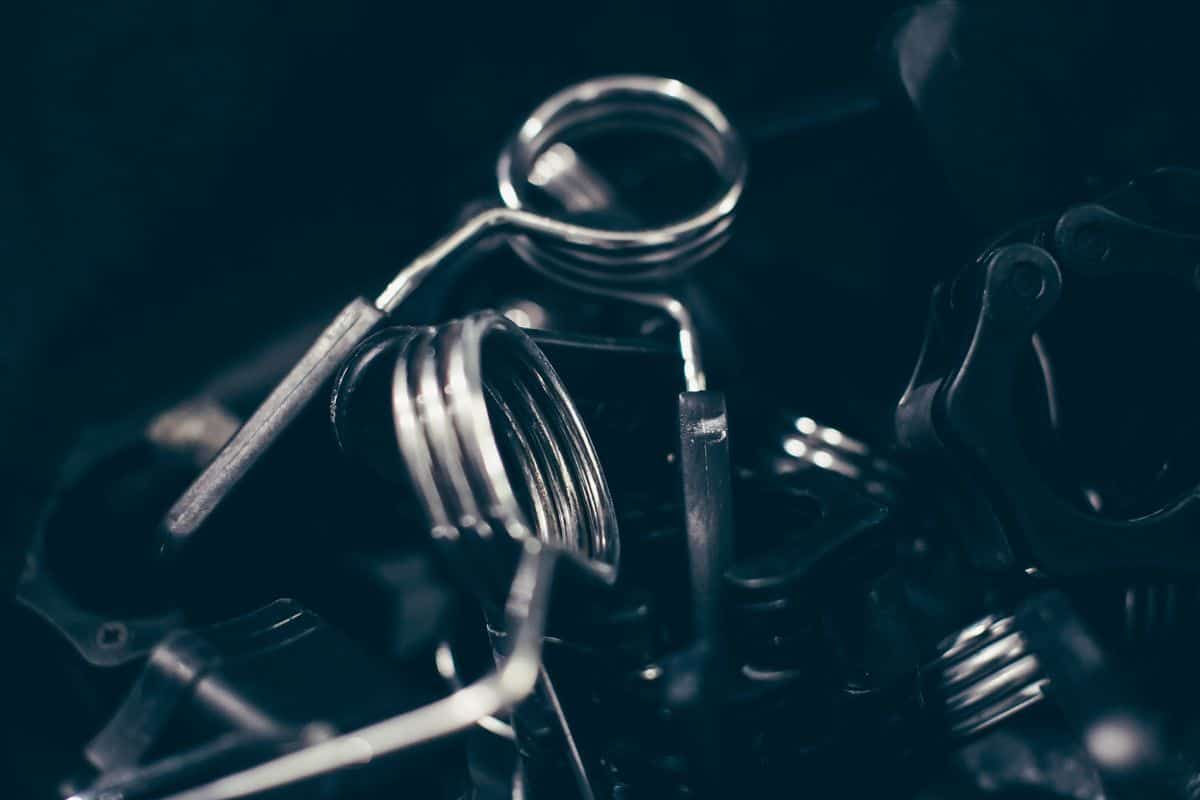
- Mount the spring bar chains on both spring bars.
- Install the spring bars on the hitch head, then lock them in place. The locking mechanism can be different between different manufacturers. Check the manual on how to securely lock them in place.
- Place a block of wood under the jack.
- Raise the trailer using the tongue jack.
- Get into your tow vehicle, start the engine, and get it ready for the trailer.
- Back your vehicle to the proper position.
- Lower the trailer and couple it to the trailer ball. Lock it into place.
- Raise the trailer using the trailer jack until it is three inches higher than its height when level.
- Mount the brackets on the trailer frame. Align it with the spring bar chains.
- Secure the brackets with bolts.
- Install the spring bar chains on the brackets. Make sure that both spring bars have the same length of chains on the bracket.
- Lock the chains in position.
- Release the trailer jack.
- Torque all bolts to the manufacturer’s recommendations.
EPAuto Drive Click torque wrench is available on Amazon through this link.
Conclusion
A chain is part of the weight distribution hitch that is made of a bar.
If you enjoyed reading this article, you might find the articles below equally enjoyable to read:


